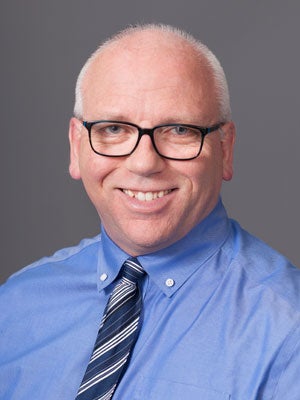Dr. Robert Corns

Clinical Associate Professor
Office Location: Leo J. 600
Telephone: (252) 744-5521
Email: cornsr18@ecu.edu
PhD in Physics, University of Manitoba, 1988
Interests
- Medical Statistics
- Radiation detection and measurement
- Dosimetric studies of brachytherapy seeds
- Dose reconstruction of radiation therapy
Research Projects
- Linear Accelerator Workload: The amount of radiation delivered by a linear accelerator (linacs) in a year is called the workload. The design of the bunker allows for a maximum workload value in any given year but current linacs do not directly track this number. Consequently from a Radiation Safety perspective, it is important to actively monitor the workload value. Our program is investigating techniques for directly measuring the workload for multi-energy linacs.
- New standards in quality control demand testing of more detailed more information on a linac but offer now guidance on how to obtain this information. One such test is to determine the proximity of three axes of rotation on the linac – the gantry axis, the collimator axis and the couch axis. I am investigating a film-based technique that uses the film in a non-planer geometry to determine the location of the three axis and their proximity to one another.
- Bioimpedance measurements is a non-invasive method for determining a patient’s health. We measure the electrical resistance and capacitance in the human body and relate this information to cellular membrane properties such as the intracellular and extracellular water content. In particular, the phase angle of the capacitance is an important prognostic factor for cancer patient outcomes. Our group is interested in characterizing the cofactors that influence phase and are looking to compare a cohort of head and neck cancer patients to a control group.
- The placement of brachytherapy seeds influences the dosimetry delivered to the patient and a patient-specific quality assurance procedure is to confirm the seed placement with CT scans post-implant. The problem with CT scans is the reconstruction algorithm generates a tremendous amount of artifacts making accurate spatial placement of the sources difficult. An alternate approach exists whereby the trajectory of a seed’s projection in the Sinogram space uniquely maps the seed to its physical location. Moreover the seeds are high contrast objects, easily identifiable as structures in the Sinogram space and have no associated artifacts in this space. The goal of this research is to map trajectories from the Sinogram space to accurate 3D position information for each seed.
- Comparative dosimetry studies currently rely on g-maps to determine the goodness of the fit. This research project seeks an alternate evaluation tool using regression analysis and multilevel, hieratical models to assess the goodness of fit between two data sets.
Courses Taught
- PHYS 6718 Therapeutic Radiological Physics
- PHYS 6992 Radiation Therapy Physics
- PHYS 6993 Clinical and Medical Dosimetry